Now that fall has arrived, it’s time to begin planning your garden for winter. If you’re not sure where to start, don’t worry! We’ve put together a comprehensive guide that will answer all of your questions and give you some useful tips on making the process as easy as possible. Keep reading for everything you need to know about preparing your garden for winter!
How to Prepare Your Garden for Winter
With winter coming, now is the time to start thinking about preparing the garden for the cold months ahead. Here are answers to some common questions and useful tips to help you get started.
Cleaning up any dead leaves and trash is one of the most essential things you can do to prepare your garden for winter. This will help prevent pests and diseases from overwriting your plants during the winter months. It’s also a good idea to mulch your beds with a layer of straw or bark chips. This will insulate the soil and protect your plants’ roots from below-freezing temperatures.
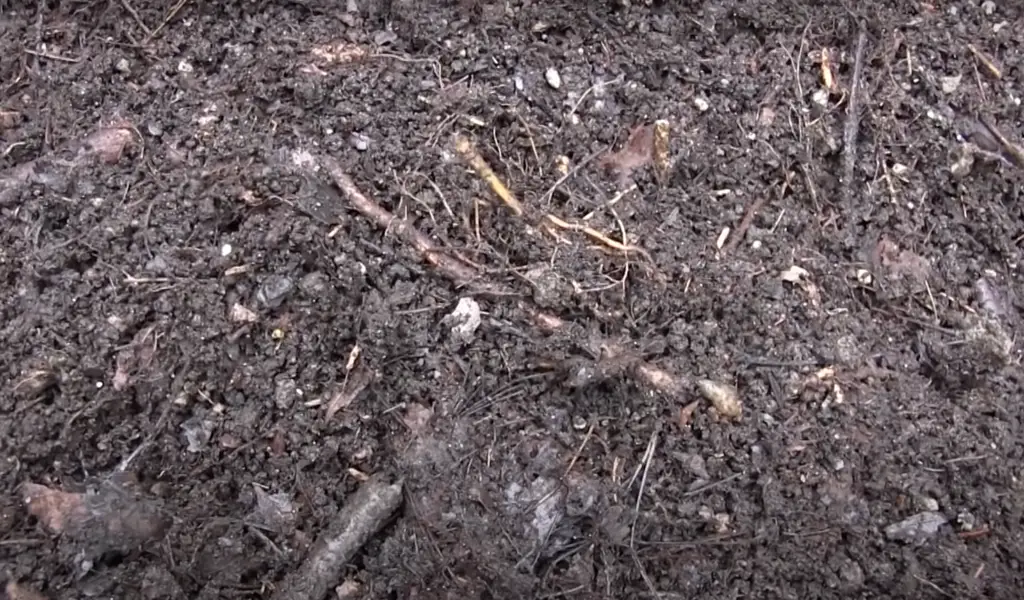
Another important thing to consider is what types of plants you’re growing. Some plants are more tolerant of cold weather than others, so it’s important to choose varieties that will do well in your climate. It’s also a good idea to group plants together based on their water needs. This will help you save time and water during the winter months when watering is more difficult.
Protect Your Trees from Winter Weather
Trees are one of the most important parts of your garden, so it’s important to take care of them during the winter months. One way to do this is to wrap their trunks with burlap or tree wrap. This helps to protect them from strong winds and freezing temperatures. You should also remove any dead branches from your trees before the winter weather hits.
Burlap is one of the most efficient methods to keep your trees safe during the winter. This will help insulate them from the cold and prevent damage from wind and snow. You can also use tree guards to protect young trees from being damaged by rabbits and other animals.
Put Your Garden Beds to Bed
The key to a good winter garden is all in preparation. By taking care of your garden beds now, you’ll ensure that your plants are healthy and happy come spring. Here’s what you need to do:
- Start by cleaning up any dead leaves or debris from your garden beds. This will help prevent disease and pests from overwintering in your soil.
- Next, add a layer of organic matter to your beds. This could be compost, manure, or even just some extra topsoil. This will help improve drainage and aeration in the soil, as well as provide essential nutrients for your plants.
- Finally, mulch heavily over all of your beds with straw, leaves, or another organic material. This will help insulate the soil and protect the plants from extreme temperature fluctuations. [1]
Clean up diseased plants
Leave the rest in place as winter homes for beneficial insects and as food sources for birds.
Cut back dead annuals, but don’t clean up the entire garden. Perennials can be left standing if you find them attractive in the winter landscape. If not, cut them to the ground.
Shred or compost leaves rather than sending them to the landfill where they take up valuable space and release methane, a greenhouse gas much more potent than carbon dioxide. Use fallen leaves as mulch around trees and shrubs or in vegetable gardens (but not in areas where you plan to plant next spring). Be sure to remove any diseased leaves before using them as mulch.
Wait until late winter or early spring to prune most trees and shrubs. But if you must prune to save a plant from damage by ice, snow, or wind, do it now.
Check trees for broken branches and remove them. If you have fruit trees, pick any remaining fruit and dispose of it (do not compost).
Mulch around the base of trees and shrubs to insulate their roots from cold damage. Use an organic mulch such as wood chips, leaves, or straw (but not hay, which can harbor weed seeds). Apply the mulch after the ground has frozen to prevent rodents from using it as a winter shelter.
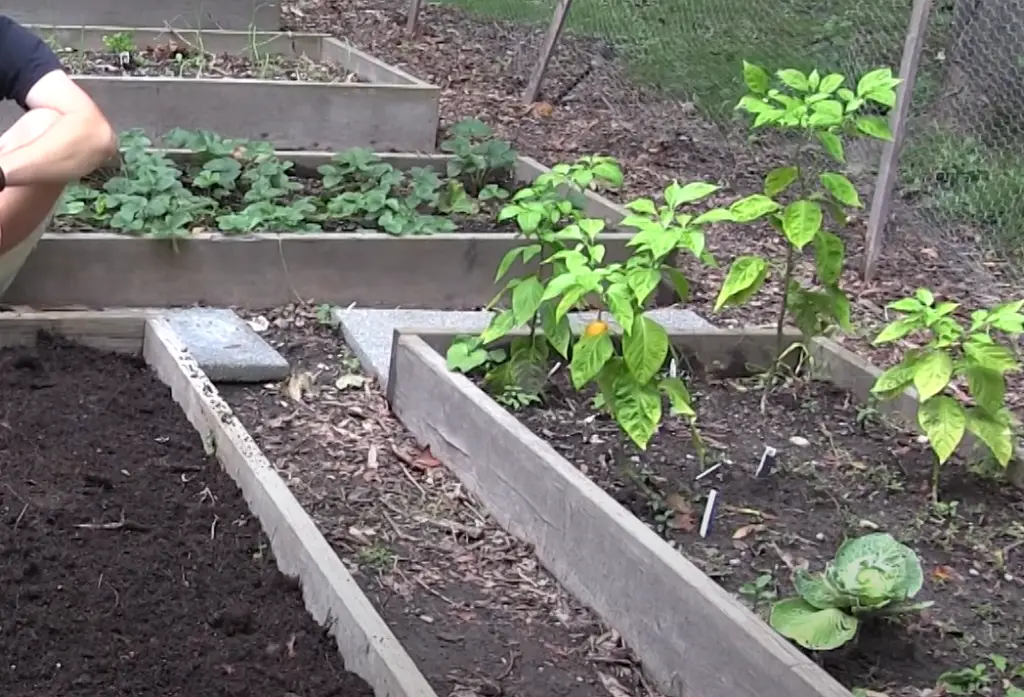
Make sure all your tools are in good working order before putting them away for the winter. Clean them and sharpen the blades if necessary. Empty the gas tank and run the engine until it uses up the fuel in the carburetor. This will prevent gummed-up parts next spring.
Remove any weeds that may have been established during the growing season
Weeds can easily take over your garden if you don’t keep on top of them, and they can be especially difficult to get rid of in the winter. If you have any invasive weeds in your garden, now is the time to remove them. You don’t want them taking over your other plants!
To remove weeds, simply pull them up by the roots.
Be sure to follow the instructions on the label carefully so that you don’t damage your other plants.Once you’ve removed all the weeds from your garden, it’s time to start thinking about what you want to plant next spring!
Amend your soil for spring
One of the best things you can do to prepare your garden for winter is to amend your soil. This will ensure that your plants have the nutrients they need to survive the winter and thrive in the spring. There are a few different ways to amend your soil, but one of the most common is to add compost. You can also add manure, leaves, or other organic matter to the soil.
Another important thing to do when preparing your garden for winter is to mulch your beds. Mulching helps protect your plants from the cold by insulating the soil. It also helps prevent weeds from germinating and competing with your plants for nutrients. You can use a variety of materials for mulch, including straw, leaves, pine needles, or wood chips.
Once you’ve amended your soil and mulched your beds, you’re ready to start planting!
Plant cover crops
Cover crops are an important step in preparing your garden for winter. They help improve soil health by adding organic matter and nutrients and can also help prevent erosion. Some common cover crops include rye, clover, and vetch.
To plant cover crops, simply sow the seeds in your garden bed in late summer or early fall. Once they have germinated and grown to a few inches tall, you can then mulch them with straw or leaves. This will help protect the plants from cold weather and keep the soil moist. In the spring, simply turn under the cover crop before planting your regular garden crops.
Another option is to plant a green manure crop, such as alfalfa or buckwheat. Green manure crops are grown specifically to be turned under and incorporated into the soil. This adds even more nutrients to your garden bed.
Prune perennials with care
Perennials are a key part of any garden, and you want to make sure they come back next year just as strong as they were this year. To do that, you need to give them a good prune in the fall. This doesn’t mean hacking everything down to the ground, however. Perennials are different from annuals in that they have woody stems that need to be left intact over winter for next year’s growth. Instead, focus on removing any dead or diseased leaves and cutting back any leggy growth. This will help the plant conserve energy over winter and give it a head start come springtime.
Divide and plant bulbs
Spring-flowering bulbs need to be planted in the fall, before the ground freezes. To ensure a bountiful spring display, purchase your bulbs early and plant them as soon as possible. Choose a sunny spot with well-drained soil for planting. Most spring-flowering bulbs do best in full sun but will tolerate some light shade. Be sure to plant your bulbs at the correct depth. The usual guideline is to plant bulbs two to three times as deep as they are tall. This will help protect them from frost heave (when frozen ground pushes up on plants and can break their roots).
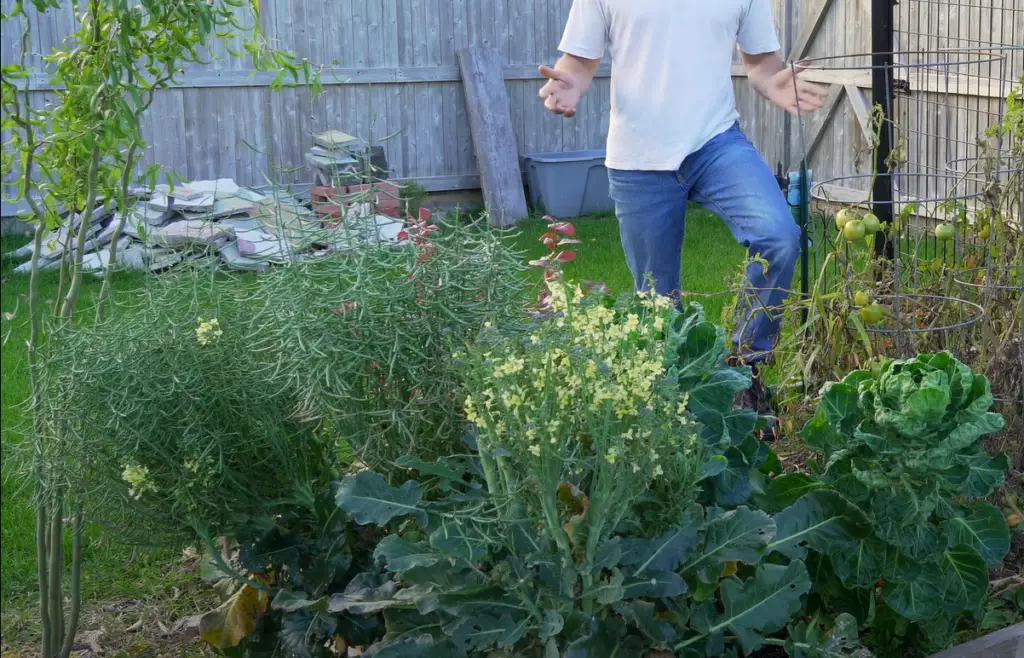
To prepare the bed, use a spade or tiller to loosen the top 12 inches of soil. Add a layer of compost or well-rotted manure. If your soil is particularly heavy, you may want to mix in some sand to improve drainage. Gently rake the bed so it’s level and then water it thoroughly.
Now you’re ready to plant! Place bulbs about four to six inches apart, depending on their size. For smaller bulbs like crocus or scilla, plant them three to four inches deep. Larger bulbs such as daffodils or tulips should be planted six to eight inches deep. Once they’re all in the ground, give them a good drink of water and cover them with a layer of mulch (straw, pine needles, shredded leaves). This will help protect the bulbs from fluctuations in temperature and keep the ground moist.
Harvest and regenerate your compost
Compost is one of the most essential tools in your gardening arsenal, so it’s important to keep it in tip-top shape. One way to do this is to harvest it and regenerate it every year.
Here’s how:
- First, identify which parts of your compost are usable and which need to be discarded. The usable material can be used as mulch or added back into your garden beds. The unusable material should be removed and either disposed of or used as fertilizer for other plants.
- Next, add fresh organic matter to your compost pile. This can be anything from kitchen scraps to leaves and grass clippings. The more diverse the materials, the better!
- Finally, turn your compost pile regularly to aerate it and help the decomposition process along.
Replenish mulch
As the weather cools, the ground begins to freeze which causes the soil to heave. This can damage your plants, so it’s important to replenish any mulch that has been lost over the winter. You should also add a layer of fresh mulch to help insulate your plants and protect them from the cold.
Mulching also helps to retain moisture in the soil, which is vital during the winter months when water is scarce. It’s important to choose the right type of mulch for your garden. A general rule of thumb is to use organic mulches for vegetable gardens and inorganic mulches for flower beds.
Organic Mulches:
- Grass clippings
- Compost
- Shredded leaves
- Straw
- Pine needles
Inorganic Mulches:
- Black plastic
- Landscape fabric
- Stone or gravel
- Bark chips or nuggets.
Mulching also helps to prevent weed growth by blocking out sunlight. Before adding mulch, make sure there are no dead leaves or debris in your yard. Mulch should be applied around the roots of your plants, avoiding contact with the stems or leaves. Mulch should be applied at a depth of about two inches (five centimeters).
Organic mulches require more regular replenishment than inorganic ones. Inorganic mulches can last for several years before they need to be replaced.
You can find mulch at most garden stores or online. Be sure to check the labels on bags of mulch to make sure you are getting the right type for your needs.
Examine your plants and calendar the growing season in your garden
Now that the leaves have fallen and the garden is in its winter slumber, it’s time to take a critical look at how your plants fared this growing season. This will help you get a sense of what worked well and what didn’t, so you can make changes for next year. It’s also a good time to start planning your spring garden by assessing which plants need to be replaced.
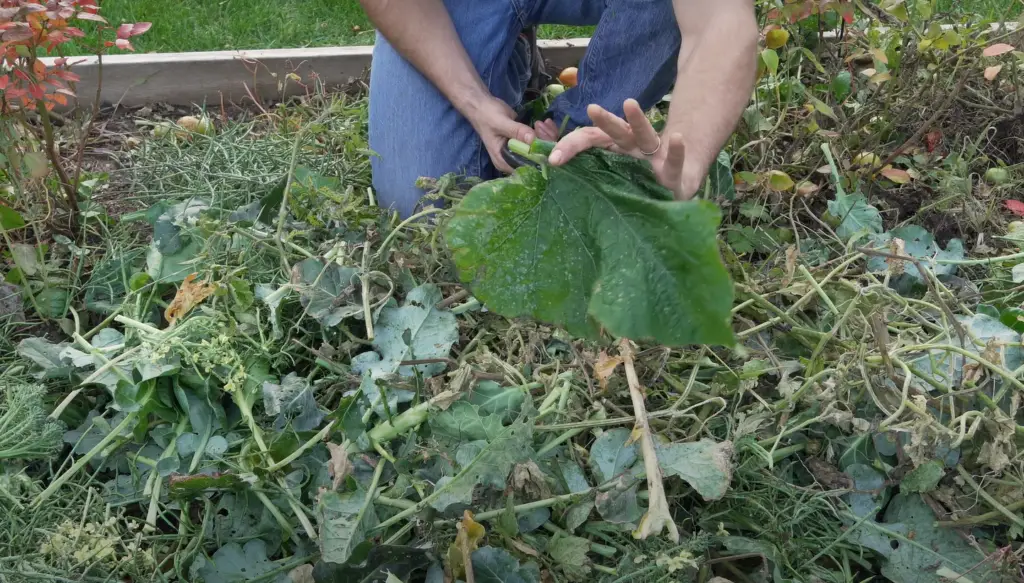
To do this, simply walk around your garden and take note of any dead or dying plants. Make note of any areas where the plant growth was sparse or stunted. Also, take note of any pests or diseases that may have impacted your plants. Once you have a good understanding of how your plants fared this year, you can start making plans for next year.
If you had a successful growing season, then congratulations! You can probably just stick to your current gardening routine and make small tweaks as needed. But if you had some problems with your plants, then now is the time to start making changes. For example, if you had issues with pests or diseases, research ways to prevent these problems in the future. If plant growth was sparse in certain areas, consider adding some fertilizer or amending the soil.
Making changes to your garden now will help ensure that you have a beautiful and bountiful garden come springtime!
Clean and sharpen tools
This is one of the most important steps for preparing your garden for winter. You need to make sure that all of your tools are clean and sharpened before you put them away for the season. This helps to prevent rust and damage from occurring over the winter months.
Once you have cleaned and sharpened your tools, you need to properly store them for the winter. This means keeping them in a dry, dark place where they will not be exposed to extreme temperatures or moisture. A good option is to invest in a storage shed or garage if you have the space.
If you live in an area with heavy snowfall, it’s also a good idea to purchase a snow blower or shovel. This will make clearing your garden paths much easier and help to prevent any damage to your plants.
This can be done with a tarp, cloth, or burlap sack. Be sure to secure the covering well so that it does not blow away in the wind.It’s also a good idea to remove any dead leaves and debris from your garden before the snowfall begins. This helps to prevent disease and rot from setting in during the winter months.
Finally, you should fertilize your plants before the ground freezes. This will give them a boost of nutrients that they will need to survive the winter and thrive come springtime. [2]
Ready Your Lawn
Your lawn is the foundation of your garden. A healthy, green lawn provides a perfect backdrop for your flowers and plants. It also helps to keep weeds at bay. But come winter, your lawn needs a little extra care to stay looking its best. Here are some tips on how to prepare your lawn for winter:
- Aerate your lawn in autumn to allow air and nutrients to reach the roots of the grass. This will also help reduce compaction from all the foot traffic over the summer months.
- Apply a fall fertilizer specifically formulated for cool-season grasses. This will give your lawn a boost of nutrients that it will need to survive the winter months.
- Mow your lawn one last time before winter sets in. Set the mower blades a little higher than usual to avoid scalping the grass.
- Rake up any dead leaves or debris from your lawn. This helps to prevent diseases from taking hold over winter.
- In the case of a sprinkler system, make sure to blow out the lines to prevent freezing and damage.
Make a Plan That’s for the Birds!
One of the best things you can do to prepare your garden for winter is to make a plan that’s for the birds! By creating a bird-friendly habitat, you’ll not only be providing a safe haven for our feathered friends, but you’ll also be giving them a much-needed source of food and water.
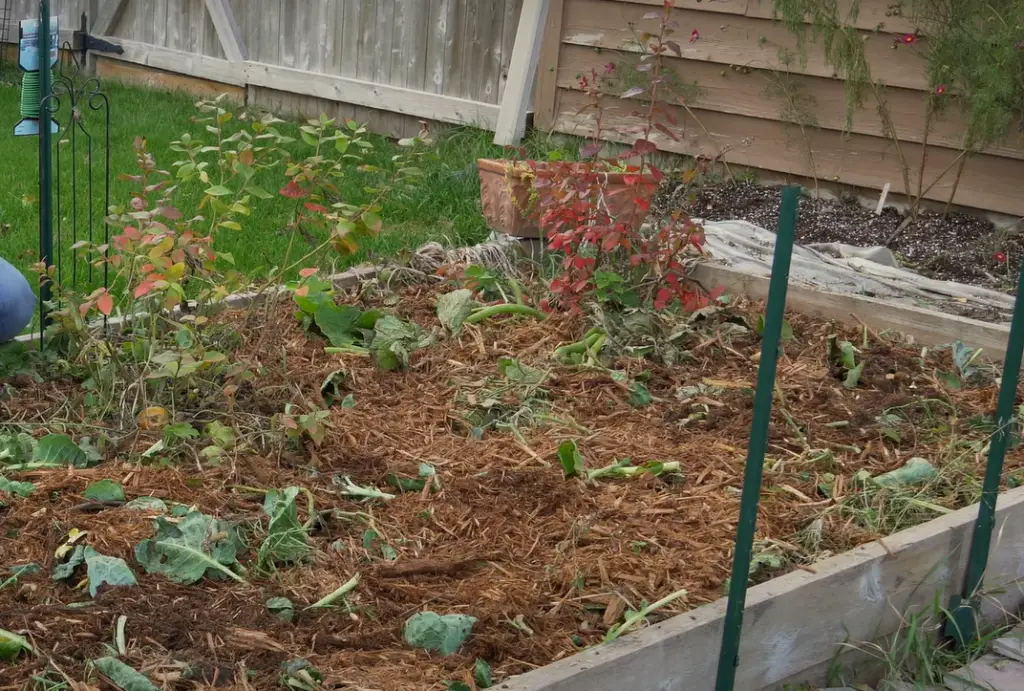
Here are a few tips on how to turn your garden into a bird paradise:
- Plant native trees, shrubs, and flowers. Not only will this provide food and shelter for birds, but it will also help support local ecosystems.
- Put up birdhouses or build nesting boxes. Make sure they’re the right size for the type of bird you’re hoping to attract.
- Put out a birdbath or other source of water. This is especially important in the winter when natural sources of water are scarce.
By following these simple tips, you can turn your garden into a haven for birds – and help them survive the winter months!
Don’t Forget Your Watering Schedule
Just because the temperatures are dropping, doesn’t mean your watering schedule should as well. In fact, you may need to water more often as the ground begins to freeze. This is because freezing temperatures cause the soil to dry out faster. Check your soil regularly and water when necessary.
Another common question is whether or not you should deadhead your flowers.
While it may seem like a good idea to remove these flowers, they actually serve an important purpose in protecting the plant during winter. The dying flowers trap heat and protect the buds that will bloom in spring. So, unless you want to risk damaging your plants, it’s best to leave the deadheading until spring.Finally, one of the most important things you can do to prepare your garden for winter is to clean up any debris. This includes fallen leaves, dead flowers, and anything else that may be cluttering up your yard. This will make your garden look neater, but it will also help prevent pests and diseases from overwintering in your yard.
Comparison of Winter Garden Preparation Indicators
As the winter months approach, it’s crucial to take proactive steps to protect your garden from the harsh weather conditions. Proper preparation ensures your plants’ survival and sets the stage for a vibrant garden in the coming spring. This table provides a comparison of various indicators for preparing your garden for winter, helping you make informed decisions.
| Indicator | Method | Benefits |
|---|---|---|
| 1. Mulching | Applying a thick layer of organic mulch around plants. |
|
| 2. Pruning | Trimming dead or diseased branches. |
|
| 3. Watering | Watering plants adequately before the first frost. |
|
| 4. Covering | Using frost cloths, burlap, or old blankets to protect delicate plants. |
|
| 5. Fertilizing | Applying a balanced, slow-release fertilizer in late fall. |
|
| 6. Garden Cleanup | Clearing debris, fallen leaves, and weeds. |
|
This table presents a comparison of essential indicators to prepare your garden for the winter season. Let’s understand the benefits of each method:
- Mulching: Applying organic mulch creates a protective barrier around plants, shielding their roots from freezing temperatures and reducing moisture loss. Additionally, as the mulch breaks down in spring, it enriches the soil with nutrients.
- Pruning: Trimming dead or diseased branches not only improves the overall appearance of your garden but also promotes healthy growth in the coming season while reducing the risk of branch breakage under snow or ice.
- Watering: Providing adequate water before the first frost helps plants withstand winter dehydration, ensuring they stay hydrated during dry winter spells and reducing stress from cold weather.
- Covering: Using frost cloths, burlap, or old blankets protects delicate plants from freezing temperatures, frost, and harsh winds. It creates a microclimate that preserves warmth and moisture.
- Fertilizing: Applying a balanced, slow-release fertilizer in late fall provides essential nutrients for root development, strengthening plants and preparing them for a robust growing season ahead.
- Garden Cleanup: Clearing debris, fallen leaves, and weeds removes potential hiding spots for pests, prevents the spread of diseases, and ensures a fresh start in spring without any hindrances.
By understanding and implementing these indicators, you can give your garden the best chance to survive the winter and thrive when spring arrives.
FAQ
How do I prepare my garden soil for winter?
One of the most important things you can do to prepare your garden for winter is to improve the quality of your soil. This will help ensure that your plants are better able to withstand the cold weather and will also make it easier for them to bounce back in the spring. Some simple ways to improve your soil quality include adding organic matter, such as compost or manure, and doing a pH test to make sure that the level is correct for your plants.
Another important aspect of preparing your garden for winter is making sure that it is properly drained. Standing water can damage plant roots and lead to problems like fungal diseases, so it’s important to make sure that any excess water can drain away quickly. One way to achieve this is by planting your garden in raised beds, which will help to improve drainage. Alternatively, you can also add a layer of gravel to the bottom of planting holes to help with drainage.
Finally, it’s also a good idea to mulch your garden before winter sets in. This will help to insulate the soil and protect plant roots from the cold weather. A thick layer of organic mulch, such as bark chips or straw, is ideal. [3]
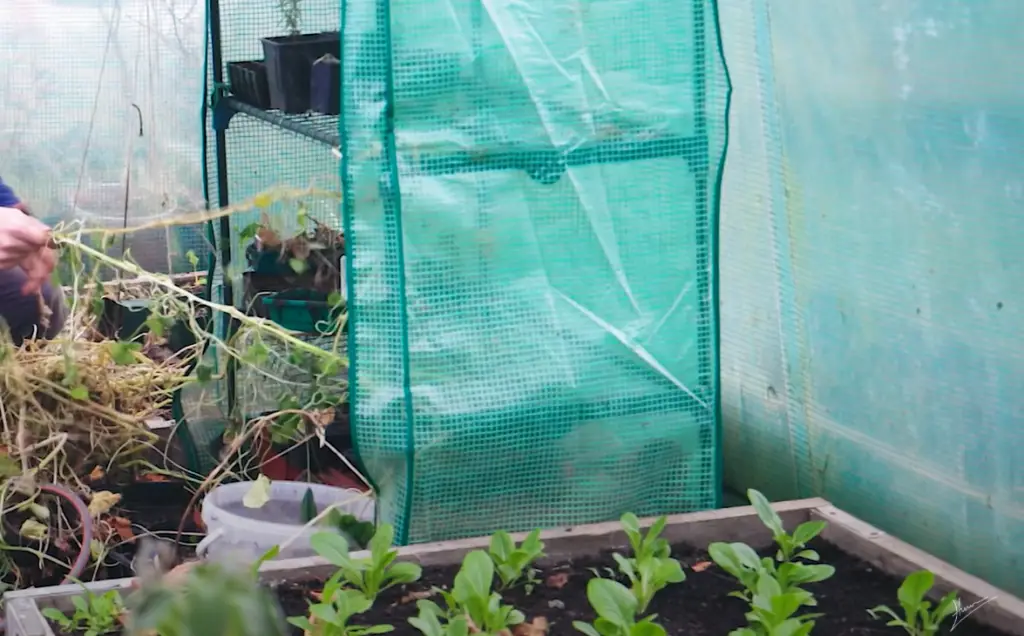
With these simple tips, you can make sure that your garden is properly prepared for winter and ready to thrive come springtime!
How do I prepare my garden for winter in the UK?
If you’re in the UK, there are a few key things you need to do to prepare your garden for winter. First, you need to make sure that any tender plants are moved indoors or into a greenhouse. This includes things like tomatoes, cucumbers, and peppers. You also need to clean up any fallen leaves, as these can harbour diseases and pests. Finally, you should mulch your borders to help insulate the soil and protect your plants’ roots from the cold. [4]
What should I put in my winter garden?
Your winter garden should include vegetables that are tolerant to frosts, such as cabbage, kale, and Brussels sprouts. You can also grow root vegetables, such as carrots, turnips, and beets. Some fruits, such as apples and pears, can also be grown in a winter garden.
What should I do with my summer plants?
If you have annual plants that are still healthy, you can move them indoors for the winter. Place them in a sunny spot near a window where they will get at least six hours of sunlight per day. Be sure to water them regularly and fertilize them every few weeks. If you have perennials that are not frost-tolerant, you will need to dig them up and store them indoors for the winter. [5]
When should I start my winter garden?
You should start your winter garden in late August or early September. This will give your plants enough time to grow before the first frost.
What are some common problems with winter gardens?
One of the most common problems with winter gardens is that they can be more difficult to keep watered. The soil tends to dry out more quickly in the colder weather, so you will need to water your garden more often. Another problem is that pests, such as rabbits and deer, can be more prevalent in the winter. Be sure to take steps to deter them from eating your plants.

Finally, frost can damage or kill plants that are not Frost-tolerant. Be sure to choose plants that are appropriate for your climate. [6]
What are the essential steps to protect plants from frost in winter?
To protect your plants from frost in winter, consider covering them with frost cloths or blankets, using mulch to insulate the soil, and moving potted plants indoors or to a sheltered area. Watering the plants adequately before a freeze can also help them withstand the cold.
How do I prune my garden plants before winter?
Before winter, prune your garden plants by cutting back dead or diseased branches. Avoid major pruning, as it may encourage new growth that can be damaged by frost. Instead, focus on removing any weak or vulnerable parts of the plant.
What should I do with my garden tools during the winter months?
During winter, it’s essential to clean and dry your garden tools thoroughly. Remove any dirt and debris, and consider sharpening the blades. Store them in a dry place, such as a shed or garage, to prevent rust and extend their lifespan.
How do I prepare my lawn for winter?
To prepare your lawn for winter, continue to mow it until it stops growing. Remove any fallen leaves or debris that can smother the grass. Aerating the lawn and applying a winter fertilizer will help it stay healthy during the colder months.
Should I bring my potted plants indoors for winter?
Yes, if you have potted plants that are not cold-hardy, it’s best to bring them indoors or place them in a sheltered area before the first frost. This will protect them from freezing temperatures and ensure their survival until spring.
How can I create a wildlife-friendly garden during the winter?
To create a wildlife-friendly garden in winter, provide food sources such as bird feeders filled with seeds and suet. Leave some areas of your garden untrimmed to provide shelter for insects and small animals. Consider installing a birdbath for water, and avoid using pesticides that could harm wildlife.
What can I do to prevent winter weeds in my garden?
To prevent winter weeds, apply a pre-emergent herbicide in late summer or early fall before the weeds have a chance to germinate. Additionally, keep your garden beds free of debris and fallen leaves, as they can create a suitable environment for weed growth.
How should I prepare my garden’s soil for spring planting?
In preparation for spring planting, add organic matter, such as compost or well-rotted manure, to the soil during the winter months. This will improve soil structure and fertility, providing a healthy environment for your plants to thrive.
Can I plant winter vegetables in a cold climate?
Yes, you can plant winter vegetables in a cold climate. Some cold-hardy vegetables, like kale, Brussels sprouts, and winter lettuce varieties, can withstand chilly temperatures and even improve in flavor after exposure to frost.
What are some ways to protect delicate perennials during winter?
To protect delicate perennials during winter, apply a layer of mulch around their base to insulate the roots. You can also use plant covers or cloths to shield them from frost and freezing winds. Watering the plants adequately before the first freeze can also help them survive the winter months.
Useful Video: 3 Cheap and Simple Ways To Prep Your Garden For Winter & Spring
Conclusion
With these tips in mind, you should be well on your way to getting your garden ready for winter. As always, if you have any questions or need more help, don’t hesitate to reach out to a professional gardener or landscaper. Winter can be a beautiful time of year, and with a little preparation, your garden can be too! Hopefully, this guide has provided some useful tips on how to prepare your garden for winter. Thanks for reading.
References:
- https://blog.cwf-fcf.org/index.php/en/how-to-prepare-your-garden-for-winter/
- https://learn.eartheasy.com/articles/ten-ways-to-prepare-your-garden-for-winter/
- https://www.growveg.com/guides/5-ways-to-build-soil-in-winter/
- https://www.housebeautiful.com/uk/garden/seasons/a2479/prepare-garden-for-winter-tasks/
- https://www.today.com/news/prepare-your-summer-garden-winter-wbna14732776
- https://www.gothicarchgreenhouses.com/blog/common-winter-gardening-problems-solutions/









Leave a Reply
View Comments